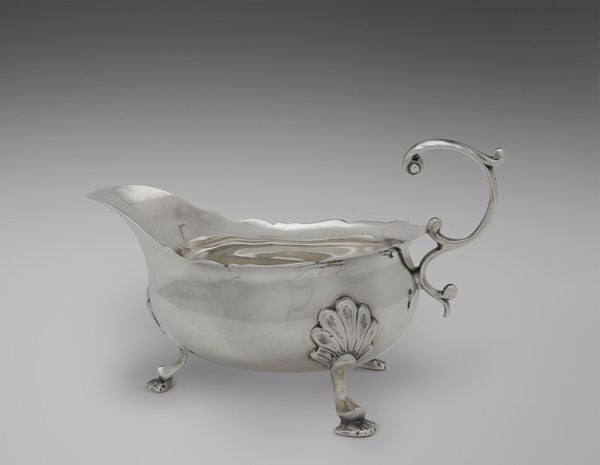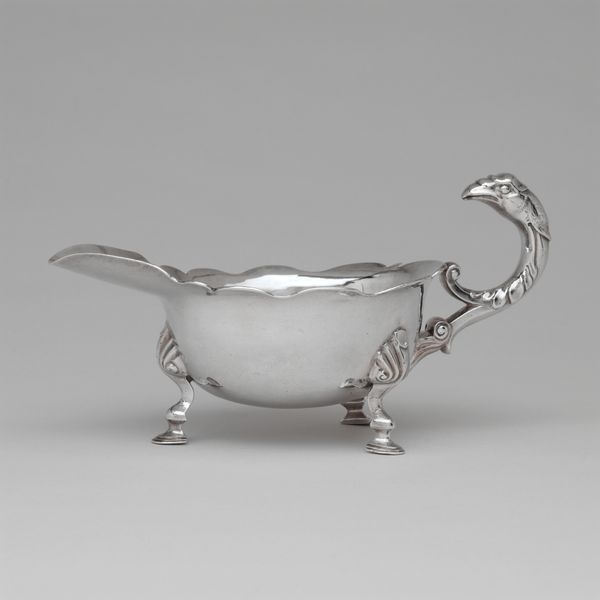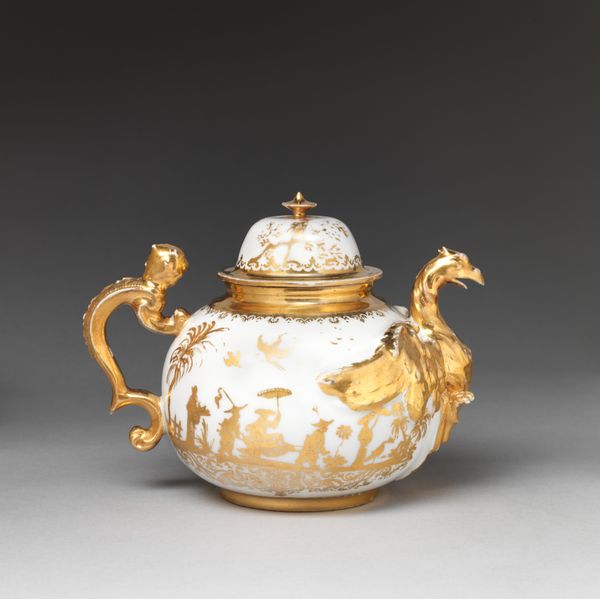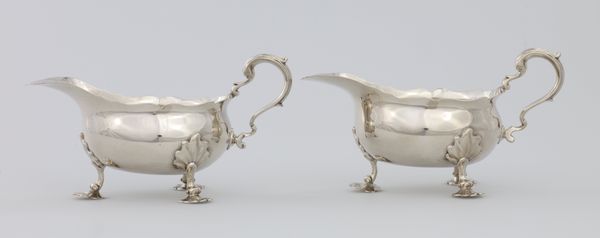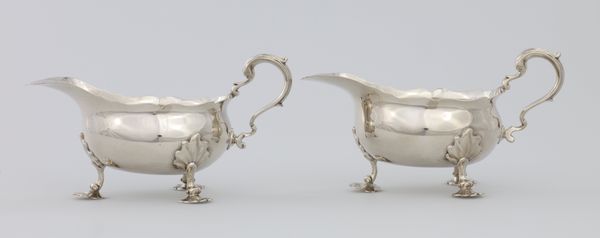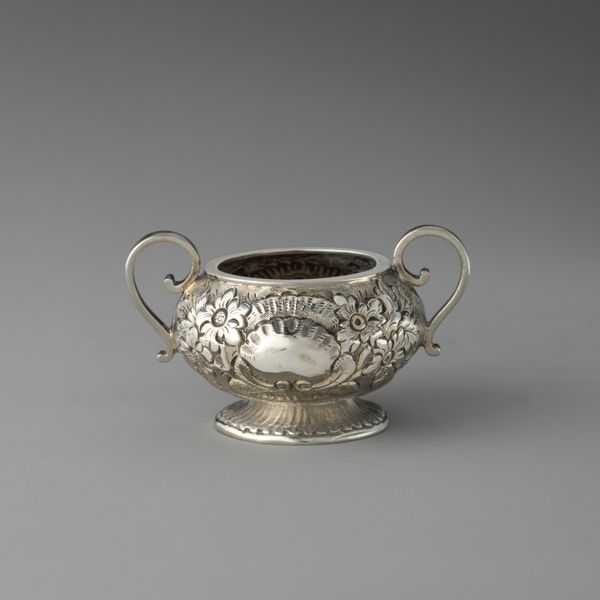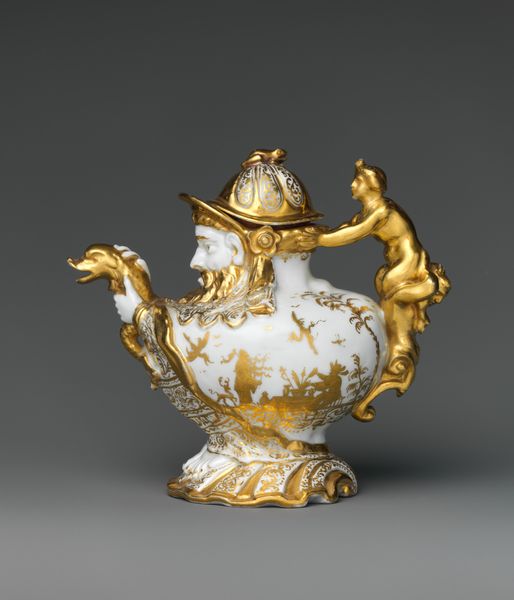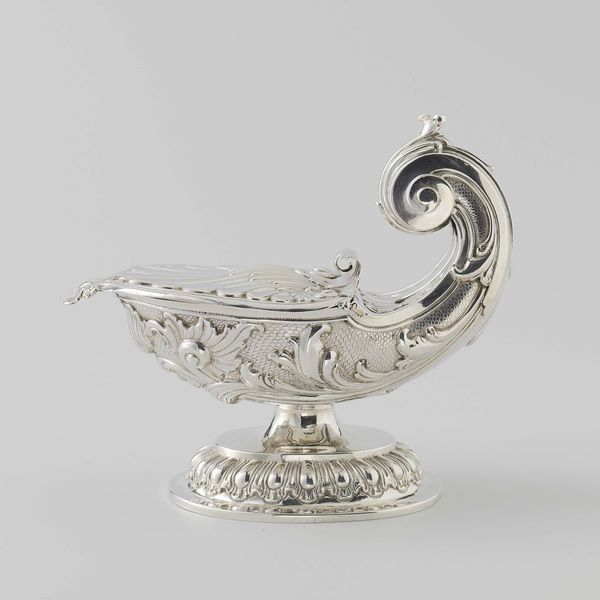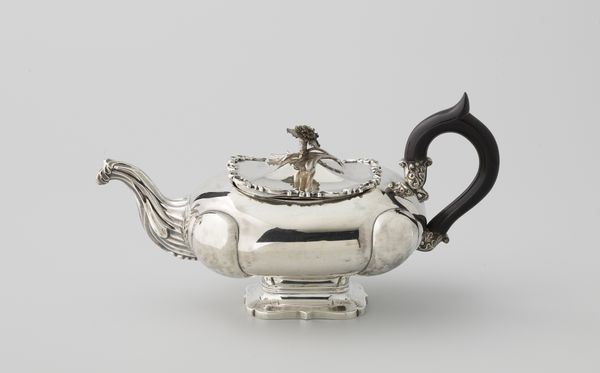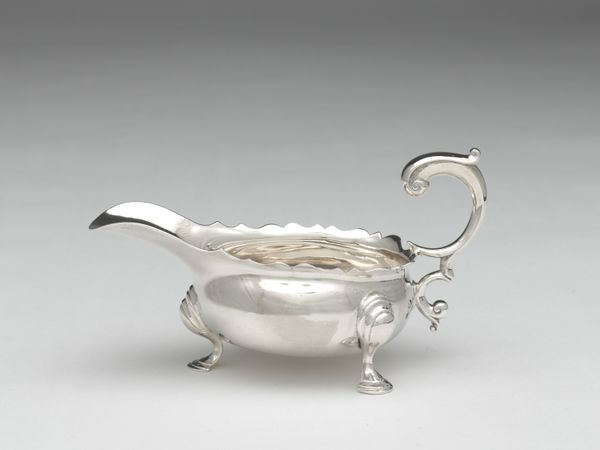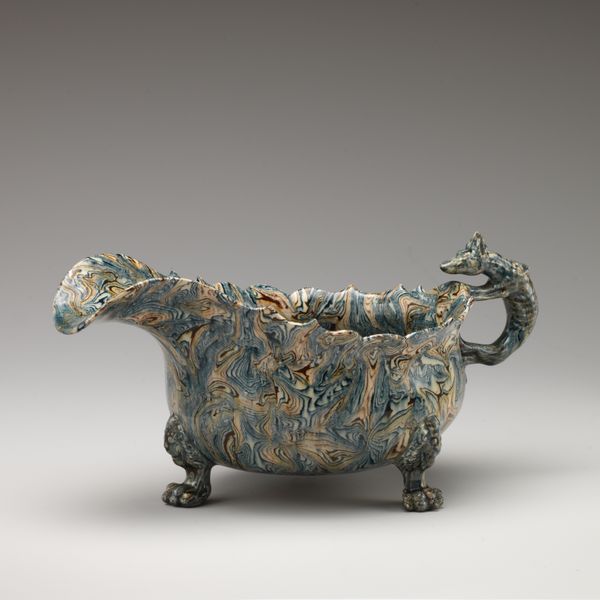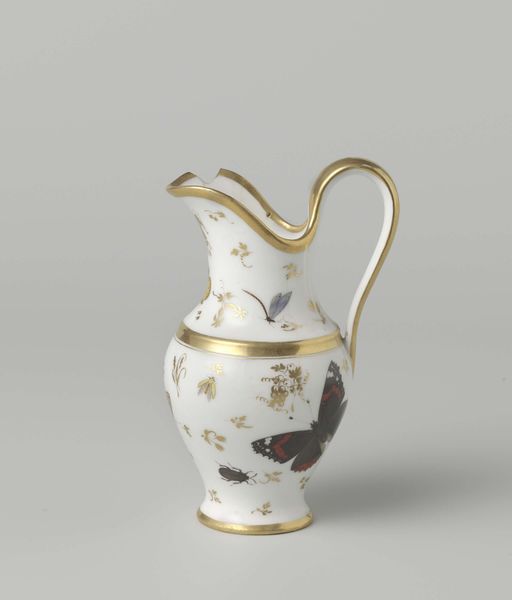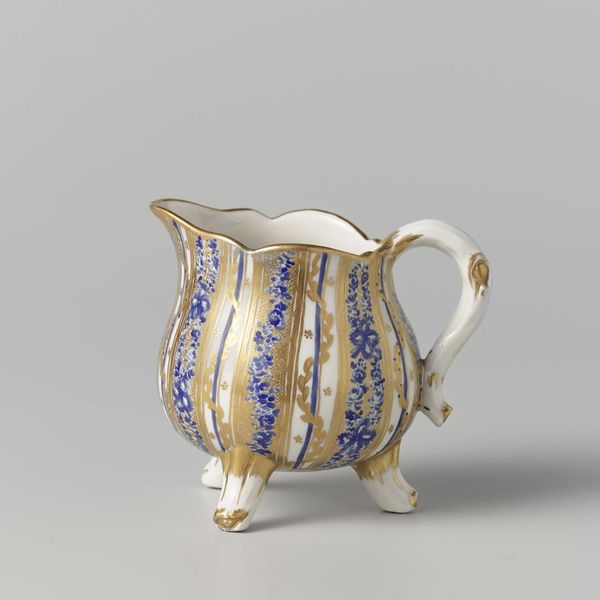
silver, metal, metalwork-silver, sculpture
#
silver
#
metal
#
metalwork-silver
#
sculpture
#
decorative-art
#
rococo
Dimensions: Overall: 4 3/8 × 3 1/2 × 6 3/8 in. (11.1 × 8.9 × 16.2 cm)
Copyright: Public Domain
Editor: This elegant Sauceboat, crafted by Robert Peaston between 1765 and 1766, is made of silver. It looks incredibly delicate. How would you interpret its role within the decorative arts of its time? Curator: Looking at this Rococo piece, one is struck by the opulence it represents, right? Silver wasn't exactly commonplace, suggesting a certain social standing for its owner. But think about what it *means* to have something so elaborate just to pour sauce. Isn't that revealing about 18th-century societal priorities and hierarchies? What statement do you think a piece like this makes about food consumption? Editor: It's almost excessive, a signifier of wealth transformed into something functional. Do you think the symbolism extends beyond just wealth, maybe into more nuanced power dynamics? Curator: Absolutely. Consider the rococo style itself: ornate, asymmetrical, deliberately extravagant. It was favored by the aristocracy and can be seen as a visual assertion of their authority and taste. The Sauceboat then, isn't merely decorative. It becomes an instrument through which social power is displayed and reinforced. Note the engraved crest -- can you see that signifying inherited power, belonging to someone important, someone with things to protect and proclaim? Editor: That’s a fascinating take! So, beyond its function, this Sauceboat stages class, wealth, and power dynamics, making even something as simple as pouring sauce a political act? Curator: Exactly! Everyday objects offer a lens into the prevailing cultural and social ideologies. The piece compels us to question whose tastes, values, and narratives get centered and validated within society. Editor: That shifts how I view it entirely. Thanks! Curator: My pleasure. Considering the everyday, like this, gives us insight into those periods in time.
Comments
No comments
Be the first to comment and join the conversation on the ultimate creative platform.
